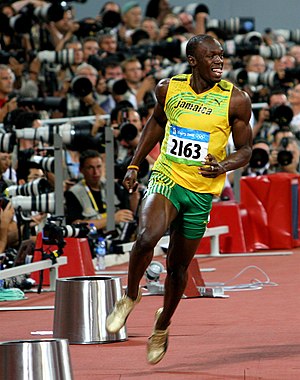Most of my experiences with massage were the post race variety where a student (most likely) gives your legs a 5 minute rub down to help with recovery. The first post-race massage I remember was after the Bears of the Blue River 5/10k. Having just raced hard and placing in the overall standings I was quite tired. My calves and lower back were in a fair amount of pain, so I lined up outside a white tent with a lone masseuse.
On this particular occasion she owned a local private massage therapy business and was donating her time to help sweaty runners recover. Surely there has to be a less dirty form of marketing. Nevertheless, I got up from the chair feeling much better. I thanked her and she gave me a business card and told me to call and schedule an appointment for a full body massage. I laughed to myself knowing that I wouldn’t be driving an hour just for a massage.
Fast forward a few years and I’ve now had quite a few professional massages at a few different places. I always felt a little nervous about the idea of massages, the idea of taking all your clothes off and laying in such a vulnerable position was a little scary. My YWCA offered massage so that seemed like a safe place to start! I haven’t regretted getting a massage since. They actually helped me get through both marathon training cycles and help to make life a little more enjoyable.
Here are a few tips I’ve gleaned along the way…
Make sure you get a sports masseuse. There are a lot of different types of massage techniques, but for an athlete you want someone who knows sports massage techniques. Just like a sports doctor, they will know a little bit more about sports related injuries and muscles plus the techniques to loosen them out.
Try a few places out. Don’t be afraid to try out a few different places before settling into one. Unless of course you feel the first place is a perfect fit! They are providing a service and like any service provider you should feel comfortable and well taken care of. Each place does things a little differently and have different feels to them.
Each masseuse is different. My wife and I both started out at the YWCA, same building, different masseuses, and very different experiences. Mine was excellent – he made me feel relaxed throughout the entire time I was there. Her’s not so much. He made her feel a little awkward and wanted to talk to her the whole time – not the most relaxing experience. I went back to the same guy throughout my first marathon training cycle. I let a few months go by and when I went to schedule my next massage he was gone, so I tried out the new lady. She was fine, but not quite as good. So I moved on! Again, they are providing a service to you and should make you feel comfortable. Massages should be a relaxing experience!
If you are nervous go somewhere like the YMCA/YWCA. If the idea of a massage make you feel a little nervous then get one from a place you already know and trust. Some place like the YWCA or your chiropractor’s office. You could also talk with your doctor or physical therapist and see who they recommend.
Hydrate. As with everything in sport (and life) proper hydration is important. You’ve got to be careful with this one, you don’t want a full bladder while laying on the table. Holding it doesn’t create a relaxed body! But after a massage they will have released a lot of toxins that your muscles were holding onto into your bloodstream. Drinking lots of water will help flush them out.
Be prepared to TIP. I never tipped at the YWCA, maybe that’s why the guy left. Every place else we’ve gone there has been a suggested TIP sheet next to the counter/cashier. Plan on 15-20%. Remember a TIP is based on the service provided.
This article from About.com answers a lot more questions about massages.
I’ll leave you with this story from my first real massage. I was chatting with the YWCA Associate at the front desk when I checked in for my first massage (30 minutes). We were chatting about how it was my first one and she’d never had one before. After my massage, which felt amazing, I walked back out and she was still sitting there. She noted that I looked super relaxed. I felt almost like a new person I was so relaxed!
Go, get a massage.



![Reblog this post [with Zemanta]](https://i0.wp.com/img.zemanta.com/reblog_e.png?w=625)
